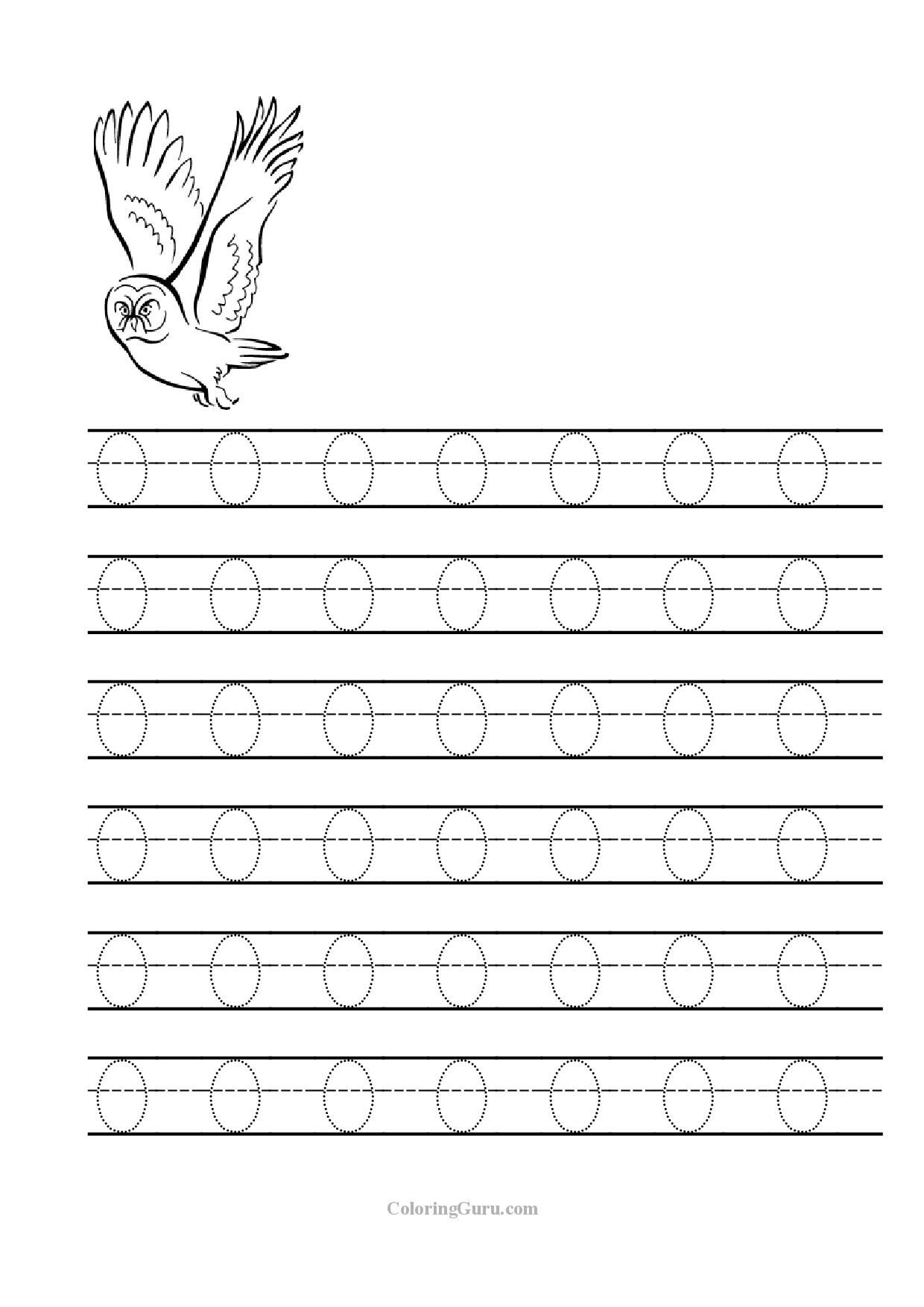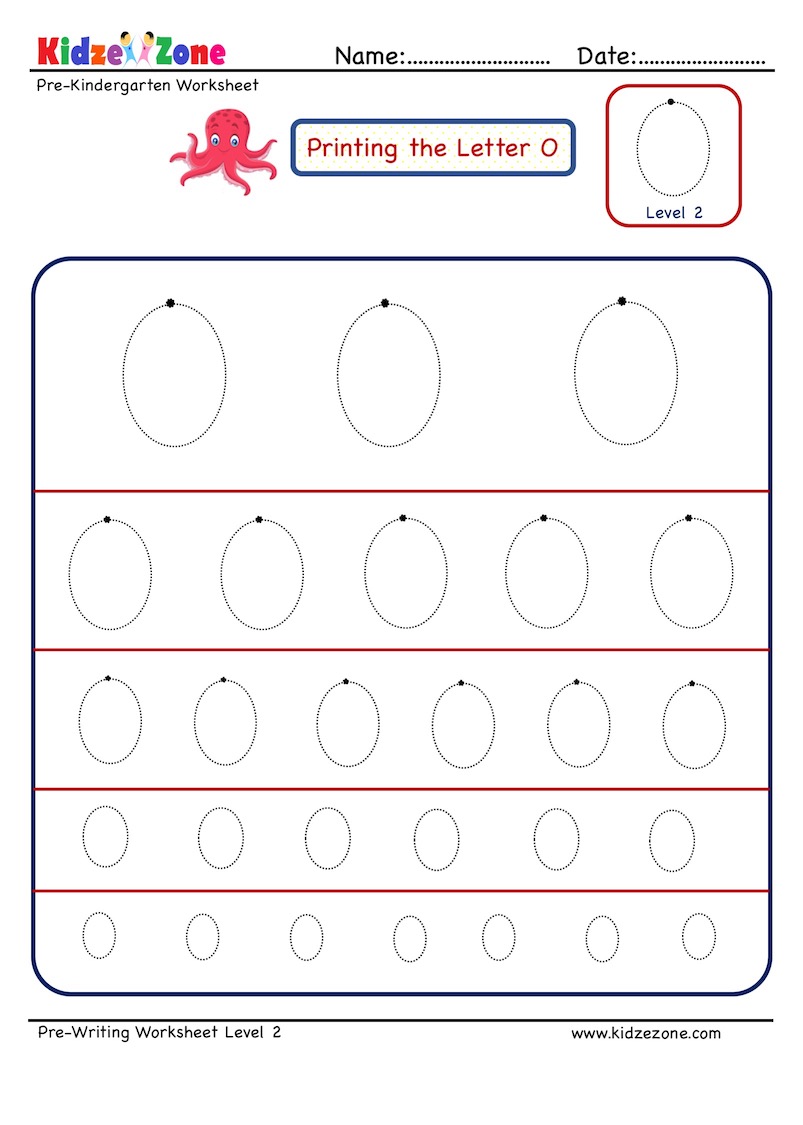Trace The Letter O
If you're helping a child learn the English language, you'll likely need to teach them how to trace letters. One of the most important letters to start with is the letter O, and while it may seem simple, there's more to it than you'd think. In this post, we'll cover the basics of trace the letter O and provide some tips to help you and your child succeed.
Potential Challenges When Tracing the Letter O
While tracing the letter O may seem straightforward, there are some potential challenges that your child may face. These include:
- Difficulty maintaining consistent size and shape of the circle
- Trouble with forming a smooth curve connecting the circle to the stem
- Lack of understanding of where to start tracing and what direction to follow
What is the Target of Tracing the Letter O?
The target of tracing the letter O is to help children learn how to write the letter correctly, as well as improve their hand-eye coordination, fine motor skills, and understanding of the English language. Tracing is an important first step in learning to write, and it can help children gain confidence in their abilities as they progress to more complex letters and words.
Summary of Main Points
To summarize, tracing the letter O is an important skill for children learning the English language. It can help improve their writing abilities, hand-eye coordination, and fine motor skills. However, there are some potential challenges that come with tracing the letter, such as maintaining consistent shape and size, forming a smooth curve, and understanding the direction to follow. Let's dive deeper into some tips for tracing the letter O successfully.
Tips for Successfully Tracing the Letter O
When it comes to tracing the letter O, there are a few tips that can help your child succeed:
- Start with a large, clear example of the letter O and have your child practice tracing over it with their finger first before moving onto pen and paper.
- Use a highlighter to emphasize the starting point and direction of the tracing.
- Encourage your child to trace slowly and carefully, making sure to maintain consistent size and shape of the circle and form a smooth curve connecting the circle to the stem.
Remember to praise your child's efforts and progress along the way, which can help reinforce their confidence and motivation to learn.
Mistakes to Avoid When Tracing the Letter O
While it's important to focus on the positive aspects of tracing the letter O, there are also some common mistakes that parents or educators should avoid, including:
- Rushing your child and pushing them to trace too quickly or with too much pressure, which can lead to frustration and mistakes.
- Not taking breaks when needed, which can lead to burnout and disinterest in learning.
- Not addressing mistakes or acknowledging progress, which can hinder your child's ability to learn from their experience.
Personal Experience with Tracing the Letter O
As someone who has helped children learn to trace letters, including the letter O, I have found that it can be a rewarding experience for both the child and the educator. When I was helping my nephew learn to trace the letter O, we started with a large example and I emphasized the starting point and direction with a highlighter. I also encouraged him to trace slowly and carefully, and praised him for his efforts along the way. By the end of the lesson, he was able to trace the letter O confidently and was excited to continue learning.
Common Questions About Tracing the Letter O
1. When should I start teaching my child to trace letters?
Most children are ready to start tracing letters when they are around three or four years old. However, every child is different, so it's important to consider their individual abilities and readiness before starting the process.
2. Should I use uppercase or lowercase letters when teaching my child to trace?
It's a good idea to start with uppercase letters, as they are typically easier for children to learn and recognize. However, once your child is comfortable with uppercase letters, you can move onto lowercase letters as well.
3. How can I keep my child motivated to learn when tracing letters?
One way to keep your child motivated is to make the process fun and engaging. Use colorful pens or markers, incorporate games or rewards, and be patient and supportive throughout the learning process.
4. What are some other letters that I should focus on tracing after the letter O?
After your child has mastered the letter O, you can move on to other simple letters such as A, B, and C. From there, you can gradually move on to more complex letters.
Conclusion
Tracing the letter O is an important first step in learning to write and improving fine motor skills. While there may be some challenges along the way, with patience and perseverance, your child can succeed in tracing the letter O and other letters as well. Remember to keep the learning process fun and engaging, and to praise your child's progress along the way. Happy tracing!
Gallery
Trace Letter O Worksheets | TracingLettersWorksheets.com

Photo Credit by: bing.com / letter tracing worksheets trace printable preschool alphabet letters activities worksheet kindergarten activity writing tracinglettersworksheets practice below visit
Letter O Words - FREE Alphabet Tracing Worksheet – SupplyMe

Photo Credit by: bing.com / letter tracing words worksheet trace alphabet word
Free Letter Oo Tracing Worksheets

Photo Credit by: bing.com / tracing preschool letters littledotseducation handwriting lines
Preschool Letter Tracing Worksheet - Letter O Different Sizes - KidzeZone

Photo Credit by: bing.com / letter preschool tracing worksheet sizes different writing
Letter Tracing Worksheets (Letters K - T)

Photo Credit by: bing.com / tracing letter worksheet worksheets alphabet printable letters pdf englishforkidz
